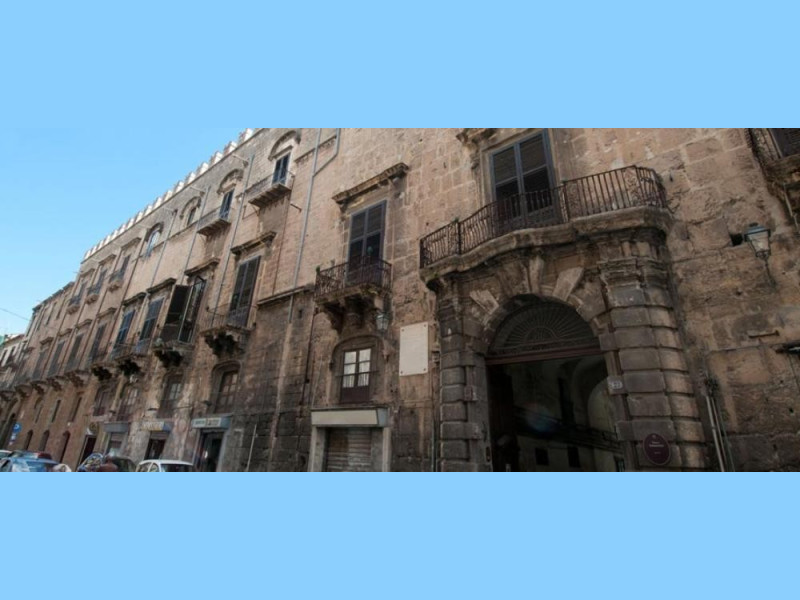Palazzo Ajutamicristo
The Palace is named by William Ajutamicristo, Baron of Misilmeri and Calatafimi, who had built it for his family between 1495 and 1501, banker from Pisa, he enriched itself in a few decades thanks to the trade of sicilian cheeses and cereals, tired of living in his castle in Misilmeri, has long he wanted to build a "domus magna" in the capital, which could good represent its wealth and that might give ornament and dignity to the city itself. The opportunity was offered by the arrival in Palermo of famous Architect Matteo Carnilivari (author of the Abatellis Palace, now Regional Gallery), to whom he entrusted the works of his palace on the way to Porta Termini. But, because of the expense, the palace was built in part by changing the initial grandiose plans. The historic building was at that time the favorite residence of distinguished guests. In 1500, Queen Joanna, the wife of King Don Ferrante of Naples; in 1535, Emperor Charles V stayed there, not being able to stay in the Royal Palace unsuitable to his magnificence; in 1544 lived there Muley Hassan, King of Tunis, shortly before he was blinded by his son Ajaja; in 1576 there was Don Juan of Austria, brother of King Philip II, who won the battle of Lepanto, in which was also attended by Admiral Marcantonio Calefati with the Pisan fleet. In 1588 Margaret Ajutamicristo gave the palace to Francesco Moncada, first prince of Paternò, for the sum of 390 ounces annual, grant which soon turned into property. In '800 the family of Moncada sells the building to the families Calefati Canalotti and Tasca d'Almerita; now, the family Calefati still holds his share of the property, while the other half was purchased by the Sicilian Region and will be the seat of the Superintendence for Cultural Heritage. The works, edited by the architect Lina Bellanca, office manager, have been commissioned by the Superintendent and lasted about three years. The goal was to maintain, wherever possible, the original state of the fifteenth-century structure, revised several times over the centuries by the owners (Ajutamicristo, Moncada, Tasca, Canalotti), of the majolica pavement, part of the frescoes found on the walls, which at first will be protected by a layer of plasterboard and stunning wooden times. Is being completed the garden in front of the entrance to the Carriage Museum of the Martorana collection, on the ground floor.

